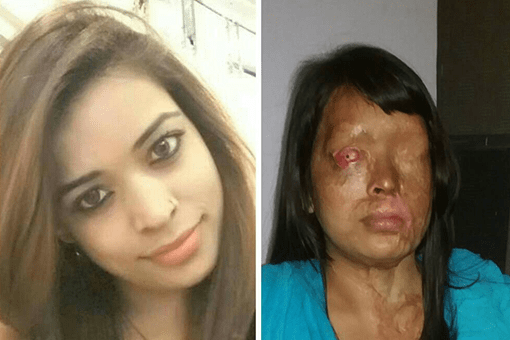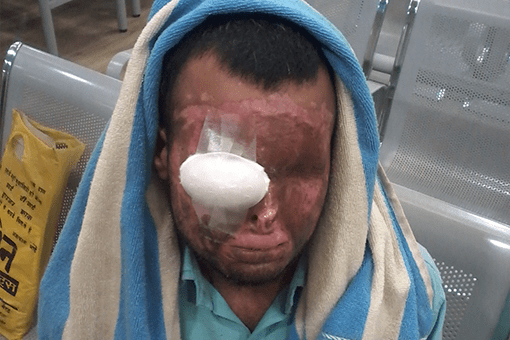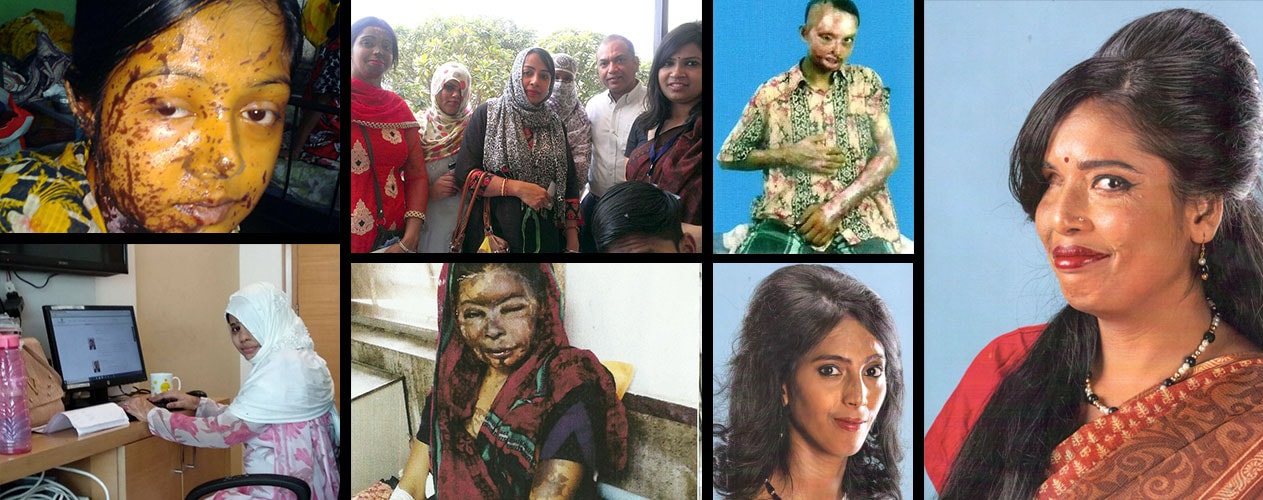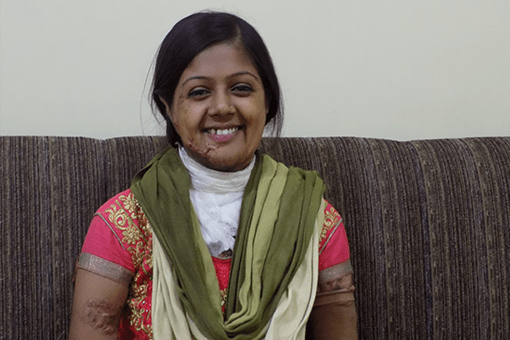
Acid eats through two layers of the skin—the fat and muscle underneath – and sometimes not only eats through to the bone but may even dissolve the bone. The deepness of injury depends on the strength of the acid and the duration of contact with the skin. Burning continues until the acid is thoroughly washed off with water. Thrown on a person’s face, acid rapidly eats into the eyes, ears, nose and mouth. The eyelids and lips may burn off completely.
The nose may melt, closing the nostrils, and the ears shrivel up.
Acid attacks, like other forms of violence against women, are social phenomena deeply embedded in a gender order that has historically encouraged male domination over women and justified the use of violence to keep women in their places.

Usually, acid burn survivors suffer severe psychological symptoms for years, if not forever, because they are constantly reminded of the violent act by their physical scars. The feeling of lack of hope and worth may never leave them.
How to deal with Trauma?
ASWWF has developed a Trauma Informed Care Kit (TICK) details of which is available from our sourcebook.
The idea is to address issues of prevention, medical treatment, psycho-social care and rehabilitation for women afflicted by acid and burns assault through a new transformative and healing approach, untried in this area before. The trauma-informed care approach is normally extended to people who are accident survivors. This unique, restorative approach has also been successfully used with people who suffer from mental imbalances.

Usually, acid burn survivors suffer severe psychological symptoms for years, if not forever, because they are constantly reminded of the violent act by their physical scars. The feeling of lack of hope and worth may never leave them.
How to deal with Trauma?
ASWWF with generous endowment from Lush Fresh Handmade Cosmetics, Vancouver BC, Canada has developed a Trauma Informed Care Kit (TICK) details of which is available from our sourcebook.
The idea is to address issues of prevention, medical treatment, psycho-social care and rehabilitation for women afflicted by acid and burns assault through a new transformative and healing approach, untried in this area before.The trauma-informed care approach is normally extended to people who are accident survivors. This unique, restorative approach has also been successfully used with people who suffer from mental imbalances.




